star anise
Have you used star anise in your cooking before? Not sure? If you’ve ever used Chinese 5-spice, then you’ve used star anise. And if you’ve ever sipped on Pernod, Galliano, or Sambucca, then you’ve tasted star anise.
I am going to tell you more about star anise than you may want to know – hang in there – there is an fantastic recipe using it that follows.
As you might have guessed, even before you saw the photo above, star anise is star-shaped. It is a dark brown pod that contains a small seed in each of its eight segments. Native to China, star anise comes from a small evergreen tree.
The Illicium parviflorum is a small, attractive evergreen tree that can be limbed to keep a small tree form or even used as a hedge. The foliage and stems have a delightful odor that reminds some people of root beer – with hints of licorice. The evergreen tree is native to China and Vietnam. Small white, pink, and purple flowers turn into the fruit (star-shaped seed pods) which are harvested just before ripening and sun-dried. It is a neat and clean tree that attracts birds. The tree is listed as hardy only to zone 8, needing moist but well-drained soil.
Hey, I live in zone 8B! That’s the same as zone 8 right? I learned all that online HERE, and once I read it, I ordered an Illicium parviflorum for my yard. I’ll update you when it arrives and is planted.
The flavor of star anise is slightly more bitter than that of regular anise seed. Asian cooks use star anise to give a licorice flavor to savory dishes, particularly those with pork and poultry. It’s available whole or ground and is an essential ingredient in Chinese five-spice powder.
It is also used to produce Pernod, Galliano, and Sambucca, and even plays a big part in the production of Tamiflu.
The reason for the sudden extreme interest in star anise is the result of a succulent recipe from Chef John Ash. Chef Ash was the guest teacher at Les Gourmettes this past week and he made the absolute easiest and most wonderful poached chicken. We then used that chicken to make slider-sized sandwiches and a soup. I’m going to give you his recipe (slightly revised) for the poached chicken today. His sandwich recipe tomorrow, which is seriously to die for, just ask my neighborhood Bunco ladies who ate them up last night! Then, my own soup recipe using the chicken and the stock it produces. Lastly, one final recipe using the remaining chicken.
You are going to want to make this, so go get yourself a couple of chickens! And while you’re at the store, here is what you’ll need for not only the poached chicken but also for tomorrow’s sandwiches.
- Two young chickens (preferably organic)
- 1 package/bottle star anise (any spice aisle, but the best price is at an Asian market)
- 2 bunches green onions
- 4 ounces fresh ginger root
- 1 package pretzel rolls (Costco has then!) or potato rolls (slider size)
- 1 bunch watercress
- 4 large onions
- golden raisins (optional)
Pantry items
- sugar
- salt and pepper
- balsamic vinegar (preferably white, but regular is fine)
- olive oil and/or butter
- garlic
John Ash’s Ginger & Star Anise Poached Chicken
2 young chickens (preferably organic)
2 bunches green onions, sliced into 2-inch pieces
4 ounces fresh ginger root; washed, unpeeled, sliced into 1/2-inch slices
5 whole star anise
Place the chickens in a pot large enough for both and add the green onion, ginger, and star anise. Cover with cold water (at least 6 quarts). Slowly bring to a simmer and skim off any scum that rises to the top.
Reduce heat, cover, and cook at a low simmer for 25 minutes. Check occasionally to be sure the water is just a bare simmer. Remove from heat and let stand covered for 2 hours.
Remove lid and cool to room temperature, for about another hour.
Remove the chickens and pull off the meat, keeping the dark meat and the white (breast) meat separate, discarding the skin and any fat.
Also discard the small bones and brittle bones, keeping just the hard large leg and thigh bones. Shred the meat while it is at room temperature.
Try and control yourself from eating too much as you shred it. It will be tempting, I know, but you need it for the next three recipes. This method of slow poaching produces a very flavorful and juicy chicken, so just taste it, and don’t devour it!
Place the dark meat in one container (to be used later for the soup) and the white meat in another container, to be used for the sandwiches tomorrow.
Transfer the stock (and those reserved leg and thigh bones) into containers that will fit in your refrigerator and chill overnight.
In the morning, remove and discard the congealed fat that has risen to the top.
Cover and refrigerate the soup recipe that I will post on Saturday.


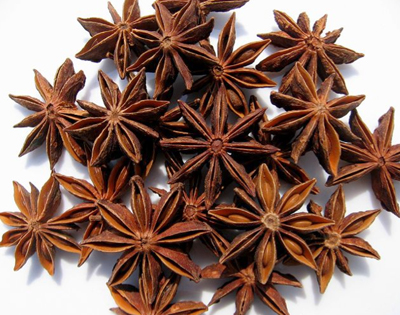

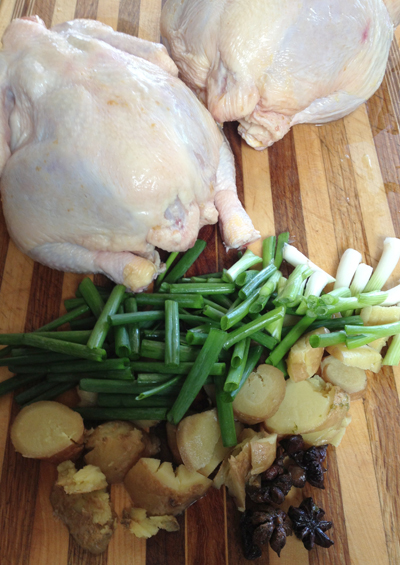
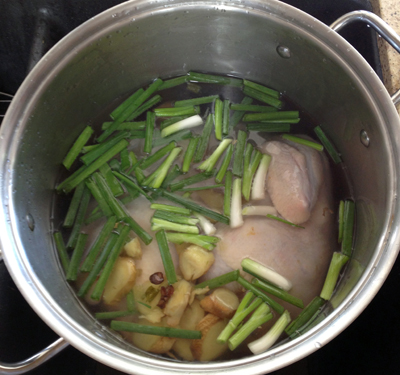
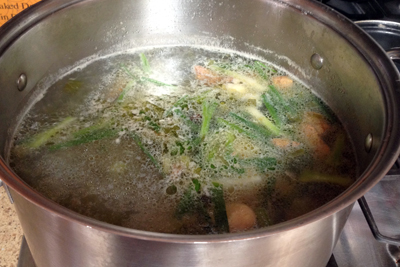
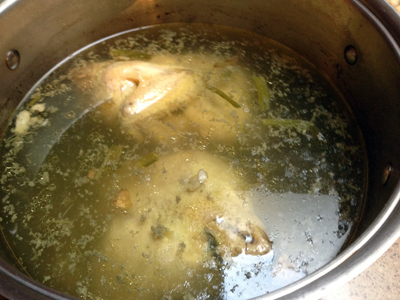

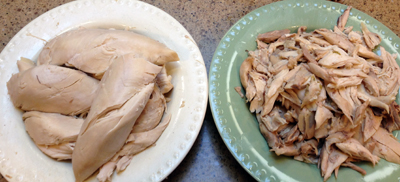
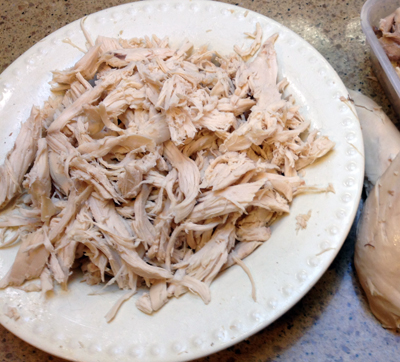
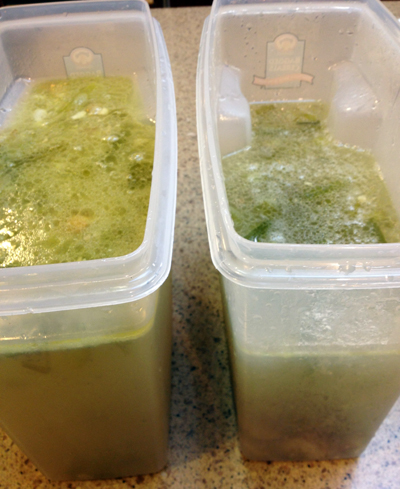
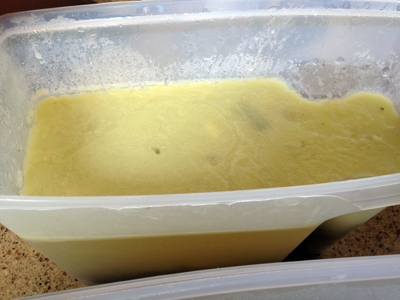
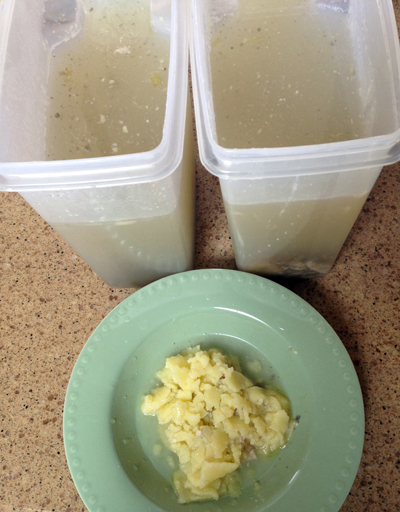




1 comment
That is a great post!
Leave a Comment